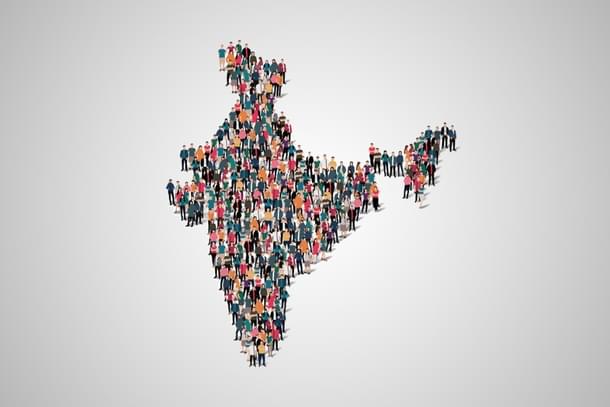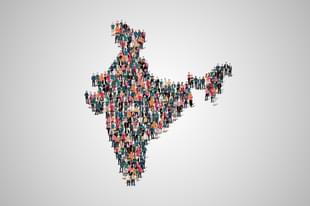Ideas
Census 1931: Why It’s Relevant Now More Than Ever
Shrikanth Krishnamachary
Jul 15, 2018, 01:55 PM | Updated 01:55 PM IST
Save & read from anywhere!
Bookmark stories for easy access on any device or the Swarajya app.


Independent India conducted its first census in 1951. However, this was not novel given that census exercises have been conducted every decade starting from 1870s. The last “proper” census conducted in British India was in 1931, as the one in 1941 was badly hampered by war.
The 1931 census is a very significant document and worthy of study, as it was the last time a census exercise examined India through the prism of caste and community – dimensions which have been taboo in census reports post-1951.
When we read the 1951 report, we learn that the Indian literacy rate was 18.3 per cent. But we do not know how that number varied by caste, nor do we know the interplay between caste, region, and gender.
To get insights into how Indian literacy levels varied by these factors, the best we can do is to dig deep into the 1931 census – a remarkable document with a wealth of information that has been denied to us post-1951 for better or worse.
While the document is rich in many ways, we will focus specifically on data pertaining to literacy – and how it varies across three important dimensions: region, caste and gender.
Before we start looking at literacy rates, we must first understand how the report in 1931 defined "literacy". This report said a literate person was someone who can write a letter, and also read an answer to it, in any language. Also the literacy rates were published based on the section of the population aged five and above.
So, based on these qualifiers, the literacy rate in British India back in 1931 was 9.5 per cent, translating into 28.1 million out of a total population of 296.3 million. The literacy rate was 15.6 per cent among men and 2.9 per cent among women.
How did literacy rates vary by region? Here's a quick look at the literacy rates in some major provinces:
An interesting observation here is the relatively high literacy rate (25 per cent plus) in Travancore and Cochin states, regions that were governed by princes and which roughly correspond to much of modern Kerala. For several decades now, we have remarked on the high literacy rate in Kerala. But this proves Kerala had a head start relative to other provinces even as early as 1931. The credit must arguably go to the princely states, as opposed to the Congress/Communist dispensations post-Independence!
Next we examine how literacy rates varied by religion, for the major religious groups:
It is clear that the two major religions were equally illiterate. But the religion grouping is not very insightful, particularly for Hindus, unless we slice the numbers by caste and region.
So let's turn to caste. This is by far the most interesting part of this census, for us today, given that it was the last census to track figures by caste.
Today, we have a very elaborate caste-based reservation system in India. Yet educational outcomes are not tracked by caste, which is unfortunate. So the best we can do is to go back to 1931, and see how communities stood in comparison to each other back then.
Did the Brahmins enjoy a huge edge in education, as often supposed, on account of their ‘cultural capital’? Also how did this vary by region? Questions worth asking.
The 1931 census publishes the caste specific literacy rates by province, but it does not aggregate the castes across province. Nevertheless, for a few chosen castes, nationwide aggregation is undertaken. From this, we learn that the Brahmin literacy rate was about 27 per cent – 43.7 per cent among males and 9.6 per cent among females.
So, it is worth noting the Brahmin varna as an all-India grouping was 73 per cent illiterate in 1931.
Was the Brahmin literacy rate uniform across regions? Not quite.
The interesting thing here is that in the North Indian plain, which was home to a vast majority of Brahmins then (as now), the literacy rate was barely above 15 per cent, less than two times the national average literacy rate of 9.5 per cent! The literacy rate of 16 per cent among Brahmins in United Provinces was actually way lower than the approximately 30 per cent literacy of the entire provinces of Travancore and Cochin (with no caste filter applied).
While it is all well to talk of the high ‘social’ status of Brahmins, it is fair to state that this was not a group with a massive edge across all provinces.
To understand the interplay of caste and geography better, let's look at the literacy rates of major castes within each geographical area. We first pick Madras and Mysore provinces – the two areas where the “Brahmin edge” was the greatest.
While the Brahmin edge in Bombay is similar to that of Mysore and Madras, it’s a very different story in Bengal. The community topping the list for Bengal is not Brahmin but Baidya. Also the Kayastha literacy rate is pretty close to that of Brahmins.
Now let's look at the United Provinces, and Punjab. Here the story is totally different.
In both United Provinces and Punjab, we see that Brahmin literacy is barely above 15 per cent. In UP, the Kayasth literacy rate is nearly thre times that of the Brahmins. In Punjab, the Khatris and Baniyas have much higher literacy rates than Brahmins.
The story that is emerging from these numbers is that Brahmins had an advantage in education only in Southern India and in Bombay, but less so in the North, where a majority of them resided.
So far we have focused on general literacy. Now let's turn to English language literacy. In the English language, the all-India literacy rate was around 1.1 per cent back in 1931.But this varied a lot by geography and caste.
It is clear that in terms of English literacy, the dominant groups were mainly a few select castes in Bengal and the South. The UP Brahmin English literacy rate in 1931 was only marginally higher than the all-India rate of 1.1 per cent.
Now an understandable reaction to all these numbers can be:
“Why dig up these 80-year-old figures in this day and age?”
The reason is, caste remains relevant in Indian public discourse and caste-based angst and perceived sense of ‘injustices’ drive our politics. So it becomes important to understand if the "enormous historical advantages" that are often talked about were real?
Modern censuses don't help us answer this question as they ignore caste, at least in the published reports. Hence we are forced to go back to the 1931 document.
Here are some key takeaways from the study:
The traditional varna system was a poor guide to figure who was literate and who was not, back in 1931. Even the varna with the highest ‘ritual’ status (Brahman) was over 70 per cent illiterate. It is also true that several castes perceived to be high in the social hierarchy had very poor educational outcomes. Eg: Rajputs
However, at the same time, it would be dishonest to claim that caste was a non-factor. It was very much a factor, but it had to be studied in relation to geography and not in isolation.
The 1931 census remains fascinating, and requires a larger audience.
Shrikanth Krishnamachary is a data scientist in financial services based out of New York City, whose interests include economics, political philosophy, Hinduism, American history, and cricket.





